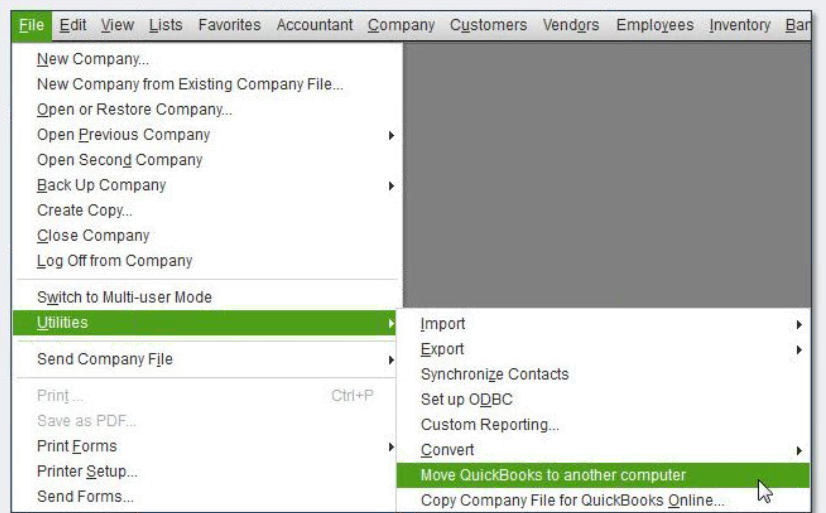
So today’s the deadline for filing your taxes, but you’ve procrastinated filing your taxes this long, why stop now?
With one form from the IRS, you can keep up your streak of “I’m going to get to that really soon” for another 6 months. Then sit back and enjoy that sweet, sweet procrastination.
IRS makes a great frenemy. Even though they’ sticklers, they’ve also published a booklet all about delaying the inevitable. Let’s get into the details.
How do I file an extension on my taxes?
The IRS has free electronic filing. It saves you a stamp and it’s a lot easier than mailing a paper form to get an extension on your tax return.
Here’s a quote from a recent press release from the IRS:
“Taxpayers can electronically request an extension on Form 4868. This service is free for everyone, regardless of income. Filing this form gives taxpayers until Oct. 16 to file their tax return. To get the extension, taxpayers must estimate their tax liability on this form and should pay any amount due.”
If you prefer the old school, snail-mail method, here’s a link to the 4868 Form. Post mark it with today’s date and you should be fine.
Where should I send my tax extension paperwork?
If you are dead-set on mailing in your tax extension form, here are the addresses:
| If you live in: |
…and you’re making a payment |
…and you’re not making a payment |
| Alabama, Georgia, Kentucky, New Jersey, North Carolina, South Carolina, Tennessee, or Virginia |
P.O. Box 931300 Louisville, KY 40293-1300 |
Department of the Treasury, Internal Revenue Service Center, Kansas City, MO 64999-0045 |
| Connecticut, Delaware, District of Columbia, Maine, Maryland, Massachusetts, Missouri, New Hampshire, New York, Pennsylvania, Rhode Island, Vermont, or West Virginia |
P.O. Box 37009 Hartford, CT 06176-7009 |
Department of the Treasury, Internal Revenue Service Center, Kansas City, MO 64999-0045 |
| Florida, Louisiana, Mississippi, Texas |
P.O. Box 1302 Charlotte, NC 28201-1302 |
Department of the Treasury, Internal Revenue Service Center, Austin, TX 73301-0045 |
| Alaska, Arizona, California, Colorado, Hawaii, Idaho, Nevada, New Mexico, Oregon, Utah, Washington, Wyoming |
P.O. Box 7122 San Francisco, CA 94120-7122 |
Department of the Treasury, Internal Revenue Service Center, Fresno, CA 93888-0045 |
| Arkansas, Illinois, Indiana, Iowa, Kansas, Michigan, Minnesota, Montana, Nebraska, North Dakota, Ohio, Oklahoma, South Dakota, Wisconsin |
P.O. Box 802503 Cincinnati, OH 45280-2503 |
Department of the Treasury, Internal Revenue Service Center, Fresno, CA 93888-0045 |
| A foreign country, American Samoa, or Puerto Rico, or are excluding income under Internal Revenue Code section 933, or use an APO or FPO address, or file Form 2555, 2555-EZ, or 4563, or are a dual-status alien, or are a nonpermanent resident of Guam or the U.S. Virgin Islands |
P.O. Box 1302 Charlotte, NC 28201-1302 USA |
Department of the Treasury, Internal Revenue Service Center, Austin, TX 73301-0215 USA |
| All foreign estate and trust Form 1040NR filers |
P.O. Box 1303 Charlotte, NC 28201-1303 USA |
Department of the Treasury, Internal Revenue Service Center, Cincinnati, OH 45999-0048 USA |
| All other Form 1040NR, 1040NR-EZ, 1040-PR, and 1040-SS filers |
P.O. Box 1302 Charlotte, NC 28201-1302 USA |
Department of the Treasury, Internal Revenue Service Center, Austin, TX 73301-0045 USA |
Mail in a paper copy of Form 4868 and enclose payment of your estimated tax due.
How long does the tax extension last?
The tax extension can usually last up to 6 months—October 16, 2017 for most calendar-year taxpayers.
Generally, you can’t extend past that date. But there may be an exception if you’re currently living out of the country.
Taxpayers who are out of the country
U.S. citizens or residents that live and work outside the United States and Puerto Rico or are serving in the military or navy outside of the United States and Puerto Rico, you can have 2 extra months (June 15, 2017 for a calendar year return) to file your return without requesting an extension.
If you officially live and work out of the country, you still get the extension even if you’re physically present in the United States or Puerto Rico on the regular due date of the return.
When you file this form, make sure you check the box on line 8 if you need an additional 4 months to file your return. If you’re out of the country and a U.S. citizen or resident, you may qualify for special tax treatment if you meet the bona fide residence or physical presence tests.
For more information on extensions for taxpayers out of the country, see Pub. 54, Tax Guide for U.S. Citizens and Resident Aliens Abroad.
Am I totally off the hook or do I need to pay interest?
The only downside about an extension is that you’ll owe interest on any tax not paid by the regular due date of your return, even with the extension. The interest will keep piling up until you pay the tax, even if you had a good reason for not paying on time.
What if I am late filing my taxes?
If you’re late filing your taxes, it’s not the end of the world. You can still file, but there’s a late payment penalty.
The penalty is around 5% of the amount due by April 18, 2017. It increases with each month or part of a month from the date with a maximum penalty of 25%. If your return is over two months late, the maximum you will be charged is $205 or the balance of the tax due on your return, whichever is smaller.
Also, the late payment penalty won’t be charged if you can give them a good enough reason for not paying on time. You can attach a statement to your return (but not to form 4868) fully explaining your reason.
You’re considered to have reasonable cause for the period covered by this automatic extension if both of the following requirements have been met.
- At least 90% of the total tax on your 2016 return is paid on or before the regular due date of your return through withholding, estimated tax payments, or payments made with Form 4868.
- The remaining balance is paid with your return.
How to claim credit for payment made with the 4868 form
When you file your 2016 tax return, include the amount of any payment you made with Form 4868 on the appropriate line of your tax return.
Here are some step-by-step instructions for filling out the tax extension paperwork:
If you and your spouse each filed a separate Form 4868 but later file a joint return for 2016, enter the total paid with both Forms 4868 on the appropriate line of your joint return. If you and your spouse jointly file Form 4868 but later file separate returns for 2016, you can enter the total amount paid with Form 4868 on either of your separate returns. Or you and your spouse can divide the payment in any agreed amounts.
Enter your name(s) and address.
If you plan to file a joint return, include both spouses’ names in the order in which they will appear on the return. If you want correspondence regarding this extension to be sent to you at an address other than your own, enter that address. If you want the correspondence sent to an agent acting for you, include the agent’s name (as well as your own) and the agent’s address. If you changed your name after you filed your last return because of marriage, divorce, etc., be sure to report this to the Social Security Administration before filing Form 4868. This prevents delays in processing your extension request.
If you changed your mailing address after you filed your last return, you should use Form 8822, Change of Address, to notify the IRS of the change. Showing a new address on Form 4868 won’t update your record. You can download or order IRS forms at irs.gov/formspubs.
If you plan to file a joint return, enter on line 2 the SSN that you’ll show first on your return. Enter on line 3 the other SSN to be shown on the joint return.
If you’re filing Form 1040NR as an estate or trust, enter your employer identification number (EIN) instead of an SSN on line 2. In the left margin, next to the EIN, write “estate” or “trust.” IRS individual taxpayer identification numbers (ITINs) for aliens.
If you’re a nonresident or resident alien and you don’t have and aren’t eligible to get an SSN, you must apply for an ITIN. Although an ITIN isn’t required to file Form 4868, you’ll need one to file your income tax return.
To round, drop amounts under 50 cents and increase amounts from 50 to 99 cents to the next dollar. For example, $1.39 becomes $1 and $2.50 becomes $3. If you have to add two or more amounts to figure the amount to enter on a line, include cents when adding the amounts and round off only the total.
Line 4: Estimate of Total Tax Liability for 2016
Enter on line 4 the total tax liability you expect to report on your 2016.
- Form 1040, line 63.
- Form 1040A, line 39.
- Form 1040EZ, line 12.
- Form 1040NR, line 61.
- Form 1040NR-EZ, line 17.
- Form 1040-PR, line 6.
- Form 1040-SS, line 6. If you expect this amount to be zero, enter -0-.
Make sure your estimate is as accurate as you can with the information you have. If the IRS later finds that the estimate wasn’t reasonable, the extension will be null and void.
Line 5: Estimate of Total Payments for 2016
Enter on line 5 the total payments you expect to report on your 2016.
- Form 1040, line 74 (excluding line 70).
- Form 1040A, line 46.
- Form 1040EZ, line 9.
- Form 1040NR, line 71 (excluding line 66).
- Form 1040NR-EZ, line 21.
- Form 1040-PR, line 11.
- Form 1040-SS, line 11.
For Forms 1040A, 1040EZ, 1040NR-EZ, 1040-PR, and 1040-SS, don’t include on line 5 the amount you’re paying with this Form 4868.
On Line 6, you do the simple math to figure out the balance due.
This might seem complicated, but you have months to figure it out. Ok, not really, you have to do it today, but you do have months to file your “real” tax return. Happy procrastinating!






